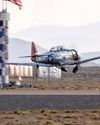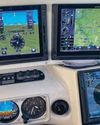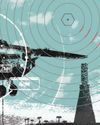Although the Morristown Six could easily be confused with a ’60s rock-and-roll band, the name actually applies to a standard instrument departure procedure, also known as a SID. SIDs look and feel different from traditional approach procedures, often including far more information arranged in a complex layout some pilots might find confusing.

Air traffic control may issue a SID as part of an IFR clearance to speed the process of moving traffic and reduce the opportunity for communications errors by controllers and pilots. Rather than the clearance delivery controller repeating essentially the same lengthy instructions over and over, use of a SID allows each aircraft to receive detailed instructions about its route in a format the pilot can review before even cranking the engine. A SID will normally include an initial heading and altitude the pilot is expected to fly. The procedure begins when the aircraft takes off, and can vary depending upon the departure runway. Initial departure instructions generally appear in text and graphical format. SIDs make ATC’s role of providing the proper separation between aircraft easier since controllers can expect each departing aircraft to fly the same published track.
This story is from the January 2018 edition of Flying.
Start your 7-day Magzter GOLD free trial to access thousands of curated premium stories, and 8,500+ magazines and newspapers.
Already a subscriber ? Sign In
This story is from the January 2018 edition of Flying.
Start your 7-day Magzter GOLD free trial to access thousands of curated premium stories, and 8,500+ magazines and newspapers.
Already a subscriber? Sign In

The Temple of Speed
Reno entices even this altitude-oriented pilot.

Flat Sixes
Fanatical artisans

Blue over Green, Tent in Between
I’m old , I’m cranky. Why do I keep air-camping?

Gulfstream Reveals G400, G800
The product lineup gains large-cabin and ultralong-range mounts.

Every Airplane Requires a Checkout
Embrace the challenge of mastering a new machine.

Fuhggedaboutit
Fifty-plus years of f lying forgetfulness

THE MAULE FAMILY APPROACHABLE AIRCRAFT
Choose your mount —the Maules do it all.

Sisters
“ Women certainly have the courage and tenacity required for long flights.” —Mildred Doran

INSIDE OUT OR OUTSIDE IN?
What kind of pilot should you be?

WE FLY: CESSNA CITATION CJ4 GEN2
THE FLAGSHIP CJ JUST GOT A WHOLE LOT BETTER.